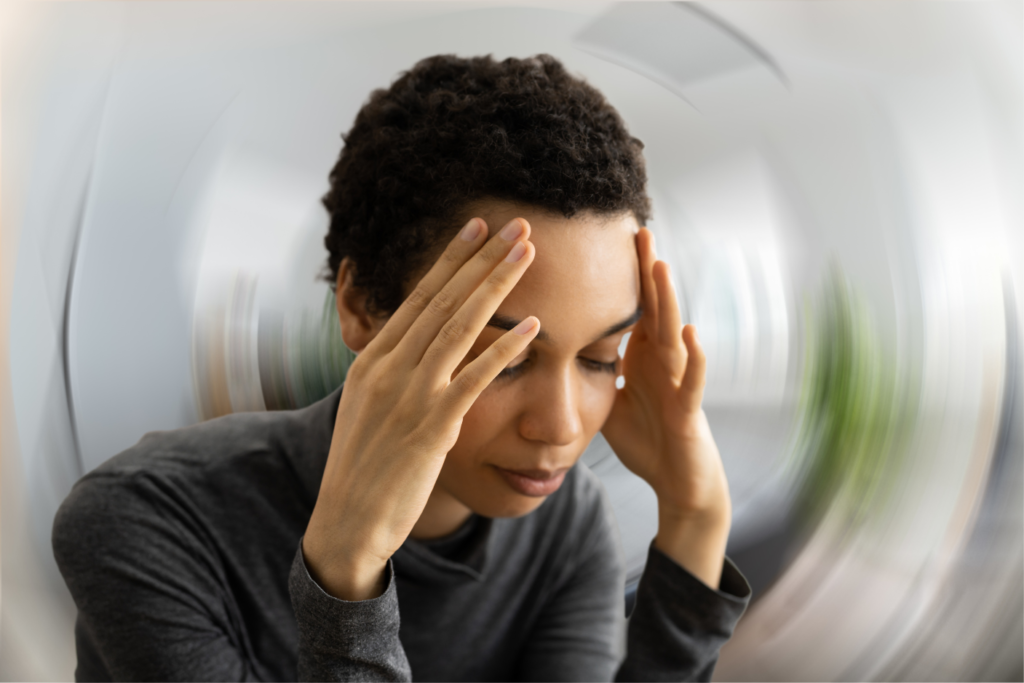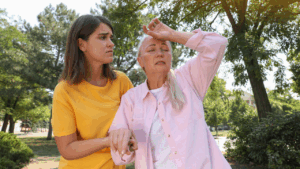Dizziness, Vertigo and Vestibular Rehabilitation
Vestibular disorders are very common and, although usually not life threatening, can severely affect one’s quality of life and lead to limitations in work, physical activity, activities of daily living and socializing. Additionally, they can increase the risk of falls and lead to an increased risk of chronic health conditions.
The vestibular system is a part of the inner ear that processes specialized information involved with controlling balance, posture and eye movements. Vestibular disorders can be caused by many different things including infections, immune system problems, head injuries (e.g. concussions), certain medications, and decreased blood flow to specific areas from stroke or diabetes. They can be further affected by stress, sleep, migraine headaches, anxiety and depression. It is estimated that 35% of US adults age 40 and older show signs of vestibular dysfunction, with this number increasing significantly with age. Although less common in children and younger adults, vestibular dysfunction can still be a significant problem.
One of the most common vestibular conditions is benign paroxysmal positional vertigo (BPPV). 2.4% of people will experience BPPV at some point in their life. This risk is higher in females and individuals with vitamin D deficiency, osteoperosis, migraines, head trauma and high cholesterol. Individuals with BPPV experience brief periods of vertigo (spinning), usually lasting up to one minute, with changes in head or body position such as looking up or down, getting in or out of bed, and rolling in bed. This may be accompanied by nausea or vomiting, imbalance, and nystagmus (quick rhythmic eye movement). BPPV is caused when small crystals, called otoconia, float into the semicircular canals of the vestibular system where they don’t belong. As such, it is treated with a series of head positions designed to move the crystals out of the semicircular canals. Although BPPV can be extremely unpleasant, it is usually simple to treat and repositioning maneuvers are highly successful. Often only one treatment is required when completed by an experienced therapist.
Vestibular rehabilitation is a specialized form of therapy aimed at alleviating the problems associated with vestibular disorders. It is an individualized rehabilitation process designed to reduce dizziness, vertigo, imbalance, and fall risk and to improve vision during head movement. It also aims to improve overall quality of life, activity participation and return to normal function.
An initial assessment will include a detailed history, assessment of neck movement, neurological function, specialized vestibular tests, and balance. Treatments include education and advice on symptom management, repositioning techniques for the treatment of BPPV, and exercises to improve head and eye coordination, motion sensitivity, and balance.
Vestibular therapists are trained to recognize and diagnose which conditions are appropriate for treatment and when to seek further medical investigations. In most cases, clients do not require a referral from a doctor (except in rare circumstances for extended health plan coverage).
It is important for those experiencing vertigo, dizziness and imbalance to know that they are not alone and treatment exists to help to improve, and even eliminate, their symptoms. Dizziness does not need to be a way of life and the sooner it can be properly assessed and treated the sooner you may return to the things you love.
Hall CD et al. Treatment of Vestibular Disorders (Inner Ear Balance Problems): How Does Your Physical Therapist Treat Dizziness Related to Inner Ear Balance Problems? J Neurol Phys Ther. 2022 Apr 1; 46(2): 178-179.
Agrawal Y et al. Disorders of balance and vestibular function in US adults: data from the National Health and Nutrition Examination Survey, 2001-2004. Arch Intern Med. 2009 May 25; 169(10): 938-44.
Hall CD et al. Vestibular Rehabilitation for Peripheral Vestibular Hypofunction: An Updated Clinical Practice Guideline from the Academy of Neurologic Physical Therapy of the American Physical Therapy Association. J Neurol Phys Ther. 2022 Apr 1; 46(2): 118-177.
Chen J et al. Risk Factors for the Occurrence of Benign Paroxysmal Positional Vertigo: A Systematic Review and Meta-Analysis. Front Neurol. 2020 Jun 23; 11: 506.




